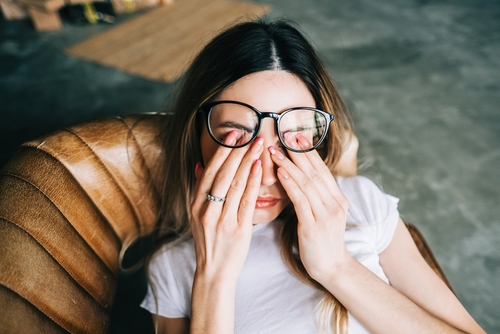
Our eyes are complex organs that require proper care to function optimally. Among the various components of eye care, hydration is fundamental. Hydrating our eyes is crucial for maintaining their health and our visual comfort.
Common Causes of Eye Dehydration
Eye dehydration, or dry eye, can be caused by a variety of factors. These include environmental conditions, such as dry or windy climates, high altitudes, and exposure to smoke or dust. It can also be a result of prolonged screen use, which often leads to reduced blinking and thus less distribution of the tear film across the eye surface.
Health conditions can also contribute to eye dehydration. For instance, disorders that affect tear production, like Sjögren's syndrome and certain types of arthritis, can lead to dry eyes. Other causes include aging, menopause, certain medications, and eyelid problems.
Natural Ways to Hydrate Your Eyes
One of the simplest methods is blinking more often, especially when using screens, to refresh the tear film. Regularly taking breaks from screen use, known as the 20-20-20 rule, can also help.
Diet plays a significant role in eye health, and certain foods can help hydrate your eyes. Omega-3 fatty acids, found in fatty fish, chia seeds, and walnuts, for instance, can help stimulate tear production. Staying well-hydrated by drinking plenty of water can also help maintain your eyes' moisture.
While these natural methods can be effective, there are also medical treatments available for more severe cases of dry eye.
What is IPL Therapy?
Intense Pulsed Light (IPL) therapy is a treatment originally used for skin conditions like rosacea but has been found effective in treating dry eye. The therapy uses pulses of light to liquefy and release hardened oils that have blocked the meibomian glands in the eyelids, a common cause of dry eye.
IPL therapy is safe and can provide long-term relief from dry eye symptoms. However, it's important to consult with an eye care professional to determine if this treatment is right for you.
Benefits of Thermal Meibomian Gland Expression
Thermal meibomian gland expression is a procedure used to treat meibomian gland dysfunction, a leading cause of dry eye. The process involves applying heat and gentle pressure to the eyelids to unblock the meibomian glands, allowing them to produce the necessary oils for a healthy tear film.
The benefits of this procedure are numerous. It can provide immediate relief from dry eye symptoms, improve vision, and reduce the need for artificial tears or other lubricants.
Deep Eyelid Cleansing for Eye Hydration
Deep eyelid cleansing is another effective method for hydrating eyes. This procedure involves thoroughly cleaning the eyelids and the base of the eyelashes, where debris and bacteria can build up and interfere with tear production and oil secretion. Regular deep eyelid cleansing can help prevent dry eye by ensuring a clean and healthy eyelid environment.
Exploring Amniotic Membranes
Amniotic membranes have been used in eye care for years due to their healing properties. When applied to the eye, these membranes provide a protective covering that promotes healing and hydrates the eye by encouraging natural tear production.
Treatment with amniotic membranes can be particularly beneficial for severe dry eye cases or when the cornea has been damaged.
Rehydrating Your Eyes for Optimal Eye Health
Hydrating our eyes is crucial for maintaining their health and our visual comfort. While natural methods and lifestyle adjustments can help, medical treatments like IPL therapy, thermal meibomian gland expression, deep eyelid cleansing, and the use of amniotic membranes can offer targeted and effective solutions, especially for more severe cases.
To learn more on how to hydrate your eyes without eye drops and treatment options, visit Envision Specialty EyeCare & Dry Eye Center in our Meridian, Idaho office. Call today at (208) 490-8823 to schedule an appointment.












